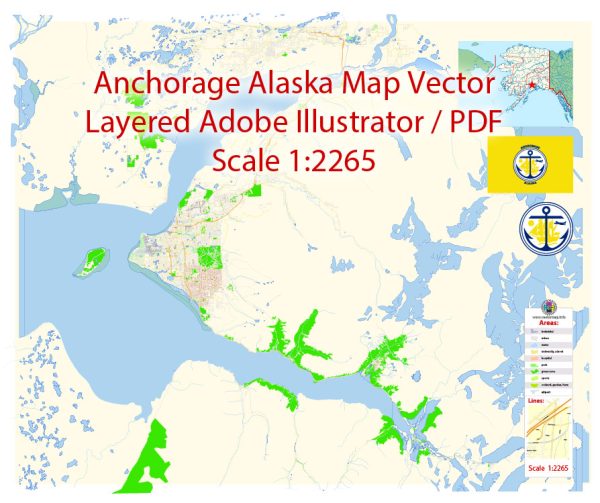Anchorage, Alaska, has a unique and fascinating history that dates back thousands of years. The history of Anchorage is marked by the indigenous peoples who have lived in the region for generations, as well as its role as a gateway to the Last Frontier and a hub for economic and cultural development.
- Indigenous Peoples: Before the arrival of European explorers and settlers, the area now known as Anchorage was home to several indigenous groups, including the Dena’ina Athabascans. These native peoples relied on the region’s abundant natural resources, including salmon, moose, and other wildlife.
- Russian Influence: In the 18th century, Russian explorers and fur traders made contact with Alaska’s indigenous peoples. By the early 19th century, the Russian-American Company established a trading post called Fort Saint Nicholas on the site of present-day Anchorage.
- American Acquisition: In 1867, the United States purchased Alaska from Russia in a deal known as the Alaska Purchase. However, Anchorage remained relatively untouched by American settlement for several decades.
- Railroad Development: Anchorage’s history took a significant turn with the construction of the Alaska Railroad in the early 20th century. The town of Anchorage was established in 1914 as a hub for the railroad, which played a crucial role in the development of the region and its economy.
- Military Presence: During World War II, Anchorage became an important military staging point for operations in the Aleutian Islands and the Pacific theater. Elmendorf Air Force Base and Fort Richardson (now Joint Base Elmendorf-Richardson) were established in the area, contributing to the city’s growth.
- Post-World War II Growth: After the war, Anchorage experienced significant population growth and urban development. The city’s strategic location as a transportation and trade hub contributed to its expansion.
- The 1964 Earthquake: One of the most significant events in Anchorage’s history was the Great Alaska Earthquake of 1964. This massive earthquake and subsequent tsunamis caused extensive damage and loss of life in Anchorage and the surrounding region, leading to significant changes in building codes and disaster preparedness.
- Cultural Diversity: Anchorage is a diverse city, with residents hailing from various ethnic backgrounds. It has a rich cultural scene that includes a vibrant Alaska Native community and cultural events that celebrate the state’s indigenous heritage.
- Economy and Industry: Anchorage’s economy is driven by a range of industries, including transportation, government, tourism, and oil. The Port of Anchorage serves as a vital transportation hub, connecting Alaska to the rest of the world.
- Outdoor Recreation: The city’s proximity to the natural beauty of Alaska, including national parks, wilderness areas, and wildlife, has made it a popular destination for outdoor enthusiasts and tourists seeking to experience the state’s breathtaking landscapes.
Anchorage, Alaska, has evolved from its humble beginnings as a railroad construction camp to become the largest city in Alaska and a vibrant urban center that retains its connection to the state’s unique natural environment and indigenous heritage. Its history is a testament to the resilience of the people who have made this frontier city their home.


 Author: Kirill Shrayber, Ph.D.
Author: Kirill Shrayber, Ph.D.